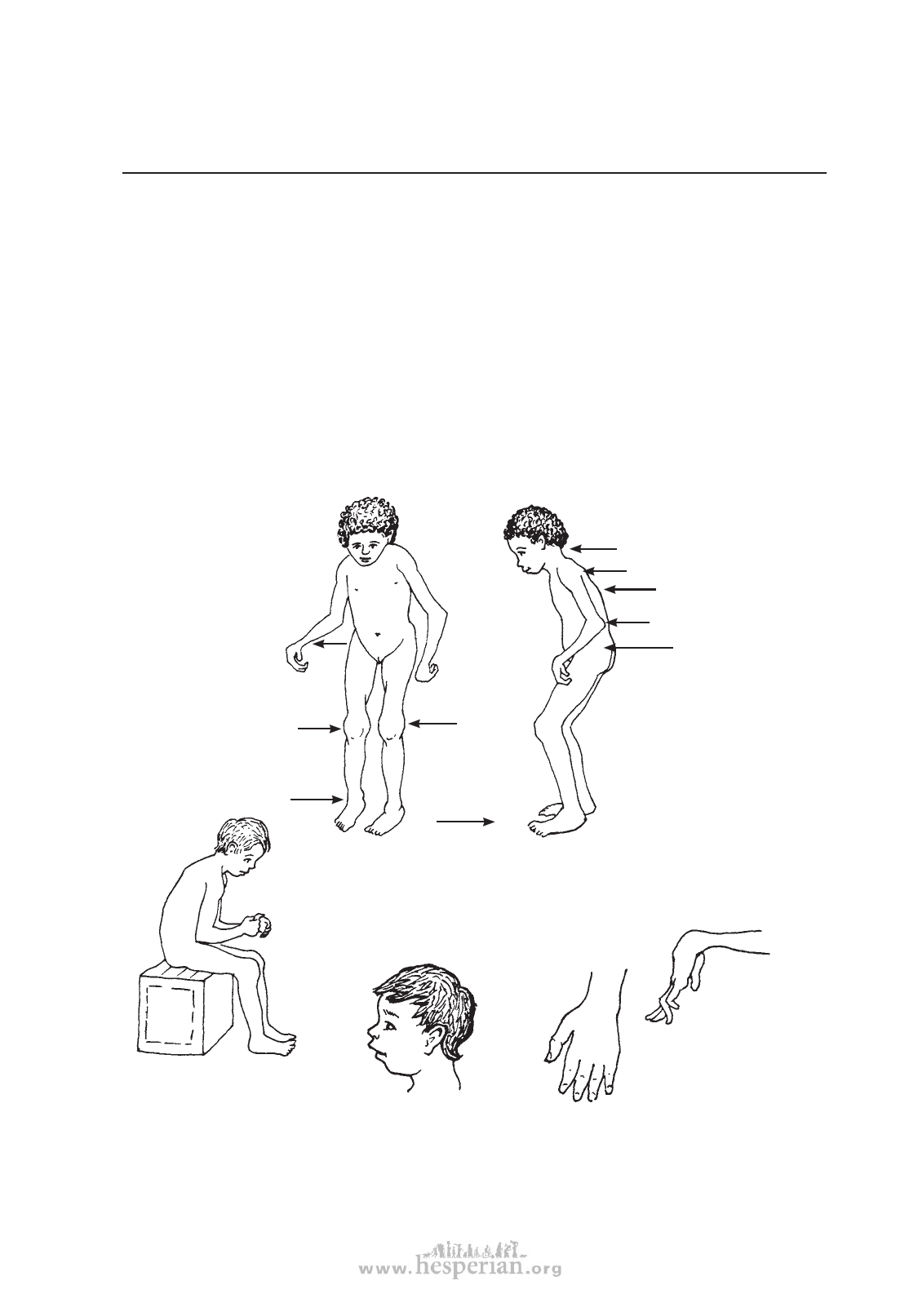
Juvenile Arthritis
Chronic Arthritis in Children
16CHAPTER
135
HOW TO RECOGNIZE IT
• The arthritis (joint pain) often begins between the ages of 5 and 10, but may
begin in very young children or teenagers.
• Usually it keeps getting worse for several years.
• There are times when the pain and other signs get better, and times when they get
worse.
• It affects different children in different ways. It can be mild or very disabling.
Signs
JOINTS THAT MAY BE AFFECTED
First, these joints
• Joint pain. Often
begins in the knees,
ankles, and wrists.
Later it affects the
neck, fingers, toes,
elbows, and shoulders.
Still later, the hips
and back may be
affected.
• Joints are especially
painful and stiff
in the morning
(morning stiffness).
Later, these joints
• Fevers and rash
that come and go.
(In some children
these are the first
signs.)
• The knees
become large
and may turn
inward.
• Pain may make it
difficult to straighten
the knees, hips, and
other joints. The cords
may tighten, forming
contractures, and the
bones may gradually
become dislocated.
• Wrists and
ankles may
become stiff
and bent.
• A child with severe arthritis
often sits with his arms and
legs bent in the least painful
position. Without exercise and
good positioning, contractures
may form so that he cannot
walk or even stand up.
• Children with • The fingers may
severe arthritis
become very thin
in the neck and
and deformed,
jaw may have a
or thick, with
small, short chin. slender tips.
• Contractures may
develop in the
fingers or toes,
and with time the
bones may fuse
(stick together).